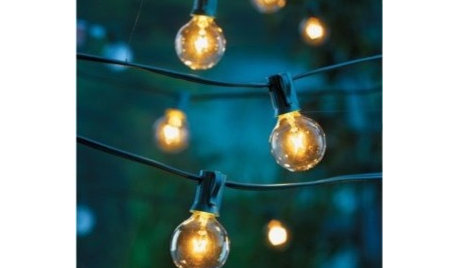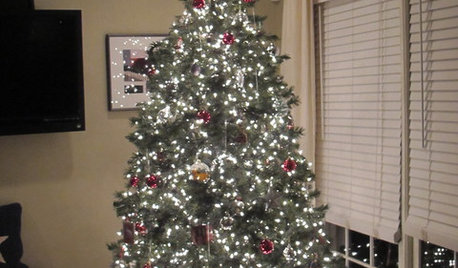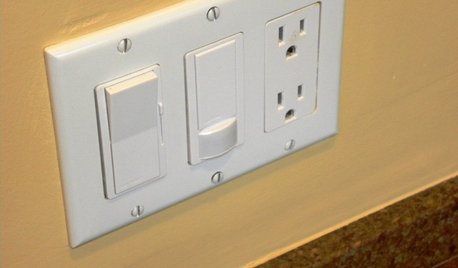Termination of stranded wire
jaysgarden
13 years ago
Related Stories

ECLECTIC HOMESHouzz Tour: Industrial Chic in the Heart of London
Reclaimed oak, black steel, a neutral palette and a touch of marble evoke subdued luxury in a 19th-century building on the Strand
Full Story
LIGHTING10 Chandeliers for People Who Don't Like Chandeliers
Get all the chandelier benefits without channeling Liberace, thanks to wood, paper, wire — and even a surprising old-fashioned staple
Full Story
HOUZZ TOURSHouzz Tour: A Fresh Look for a Classic Minnesota Home
An architectural designer updates an urban farmhouse, mixing vintage details with an open layout made for modern living
Full Story
LIFEPolar Vortex: How Houzzers Are Coping With the Storm
Spirits are staying high even as the mercury plunges to new lows. Do any of these firsthand accounts sound familiar?
Full Story
DECORATING GUIDESTwinkle Lights Keep the Holiday Spirit Year-Round
Hate to take down your outdoor lights after the holidays? Here are 12 great ways to use these festive sparklers inside your home
Full Story
LIGHTINGMidsummer Night's Dream: Starry Indoor Lighting
See How to Get the Look of Dreamy Twinkling Summer Lights Year-Round
Full Story
PRODUCT PICKSGuest Picks: Stretch Out Summer With Outdoor Lights
Don't let shorter days spoil the party. String lights, flameless candles and lanterns can brighten patios beyond summer
Full Story
CHRISTMASHow to Light Your Christmas Tree Like a Pro
Give yourself frustration-free tree lighting this year — the trick is clever cord management
Full Story
GREAT HOME PROJECTSHow to Install a Dimmer Switch
New project for a new year: Take control of your lighting to set the right mood for entertaining, dining and work
Full Story
LIGHTINGThe Lowdown on High-Efficiency LED Lighting
Learn about LED tapes, ropes, pucks and more to create a flexible and energy-efficient lighting design that looks great
Full Story








wayne440
jaysgardenOriginal Author
Related Professionals
Delhi Electricians · Wellesley Electricians · Bell General Contractors · Clinton General Contractors · De Pere General Contractors · Elgin General Contractors · Mount Laurel General Contractors · Nashua General Contractors · Rotterdam General Contractors · Prunedale Solar Energy Systems · Detroit Home Automation & Home Media · Gages Lake Home Automation & Home Media · Manhattan Home Automation & Home Media · Philadelphia Home Automation & Home Media · Rowland Heights Home Automation & Home Mediajoed
Ron Natalie
brickeyee
Billl
jaysgardenOriginal Author
DavidR
mike_kaiser_gw
alan_s_thefirst
Ron Natalie
brickeyee
randy427
countryboymo
pharkus